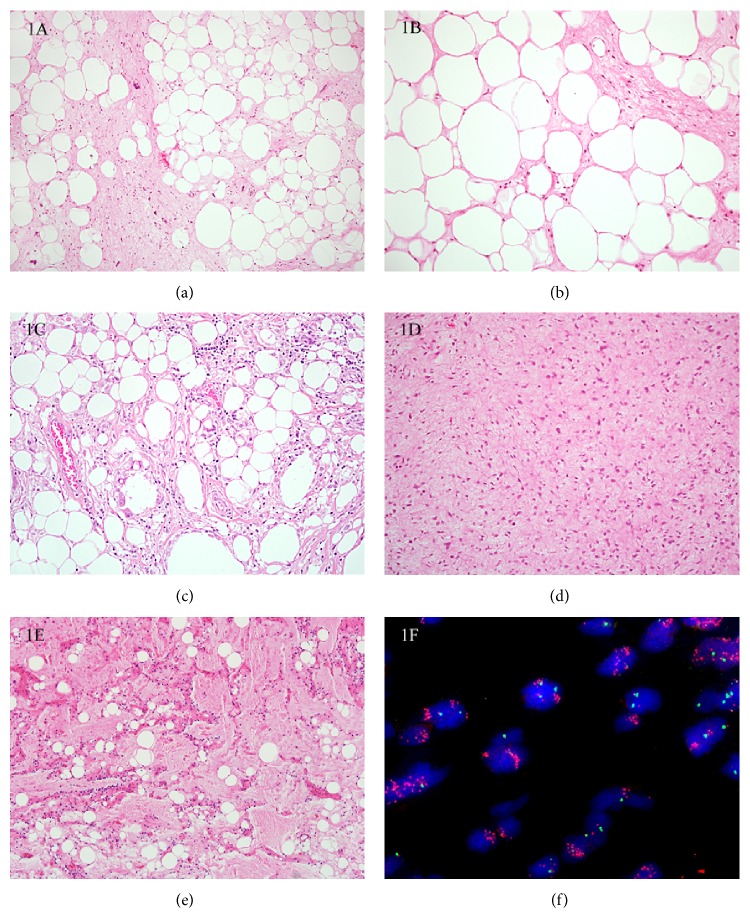Figure 1.
(a) Well-differentiated liposarcoma (WDL). This typical example shows differentiated adipose tissue intersected by thick fibrous septa containing spindle cells with enlarged, hyperchromatic nuclei. (b) This WDL shows lobules of mature adipose tissue, with fibrous septa containing minimal atypia, and can be difficult to distinguish from fibrolipoma or lipoma with fat necrosis. (c) Fat necrosis. This can be extensive, with prominent histiocytes containing plump nuclei, making it difficult to distinguish from WDL. (d) Dedifferentiated liposarcoma (DDL) showing a “low grade” pattern of dedifferentiation can be mistaken for a variety of lesions, including benign neoplasms such as neurofibromas, those of intermediate biologic potential such as fibromatosis, or with other sarcomas such as low grade fibromyxoid sarcoma. FISH for assessment of MDM2 amplification status is useful in supporting the diagnosis of DDL. (e) This myxoid variant of DDL bears a striking resemblance to myxoid liposarcoma (MLPS). Evidence of MDM2 amplification with FISH is strongly supportive of DDL, as MDM2 amplification is not described in MLPS. (f) Fluorescence in situ hybridization for MDM2 amplification status. The green CEP 12 signals are located on the centromere of chromosome 12 and the red MDM2 signals are located on the long arm of the same chromosome (12).

